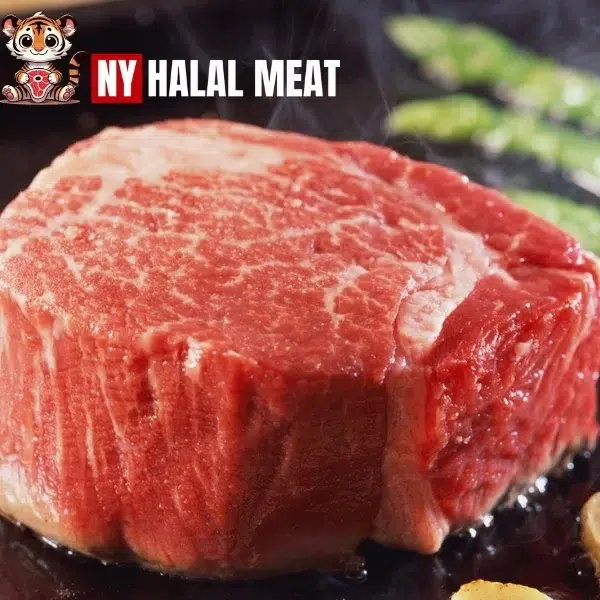How to Properly Defrost Halal Meat Without Compromising Quality or Integrity
Defrosting halal meat is not just about convenience or saving time—it is a vital step in preserving food safety, taste, texture, and, most importantly, religious observance. As with all meat, thawing should be done with care, but halal meat requires additional considerations due to its spiritual significance. Choosing the right defrosting method protects against harmful bacteria, prevents quality loss, and maintains the integrity of halal certification. Learn more about halal meat at nyhalalmeat.com.
Thawing in the Refrigerator: A Reliable and Hygienic Approach
This method is highly recommended for anyone seeking the safest and most consistent results. Refrigerator thawing allows halal meat to gradually come to temperature under controlled conditions, specifically below 40°F (4°C). This method significantly minimizes the risk of bacterial growth. Whether you’re thawing a whole chicken, a lamb roast, or a pack of halal ground beef, placing it in a leak-proof container or tightly sealed plastic wrap is essential. This prevents raw juices from contaminating other foods stored nearby. While it requires advance planning—larger cuts may need 24 hours or more—the results are superior in taste and safety.
Cold Water Thawing: Fast and Effective with Vigilant Monitoring
When a quicker solution is needed, cold water thawing is a safe and effective alternative. The key is to ensure the meat is sealed in airtight packaging to prevent water from seeping in and compromising the texture or cleanliness. Place the package in a large bowl or sink filled with cold tap water and change the water every 30 minutes to maintain a consistently cool environment. This method can thaw smaller cuts in a few hours but requires immediate cooking after thawing to ensure safety. It is ideal for last-minute meal preparation without sacrificing halal standards. For more halal cooking guidance, visit nyhalalmeat.com.
Microwave Thawing: Convenience That Requires Caution
Using a microwave to thaw halal meat is the fastest method, but it must be used carefully to avoid uneven heating. Many microwaves have a defrost setting specifically designed for this purpose. Still, some areas of the meat may start cooking while others remain frozen, which can impact taste and safety. If you choose this route, turn the meat regularly and cook it immediately after thawing. This method is best reserved for small portions and emergencies rather than routine defrosting.
Why Thawing at Room Temperature Is Not Safe for Halal Meat
Leaving meat out on the kitchen counter might seem harmless, but it exposes the meat to temperatures that promote rapid bacterial growth. Between 40°F and 140°F (4°C to 60°C)—known as the “danger zone”—pathogens can multiply quickly, making the meat unsafe to eat. Halal guidelines emphasize cleanliness and health, making this method incompatible with best practices. No matter how short the time, room-temperature thawing should be completely avoided.
Maintaining Hygiene Throughout the Thawing Process
Hygiene is fundamental to halal food preparation. From the moment you remove meat from the freezer, ensure that your hands are washed, surfaces are clean, and utensils are sanitized. Defrosted meat should be kept separate from other foods, particularly those that are not halal, to prevent any risk of cross-contamination. Designating specific cutting boards and containers for halal meat can be a practical step in upholding these standards.
How Proper Packaging and Labeling Enhance Safety and Efficiency
Packaging isn’t just about storage—it’s also about preserving the halal meat’s quality during freezing and thawing. Use heavy-duty freezer bags or vacuum-sealed pouches to reduce air exposure and prevent freezer burn. Labeling each package with the freezing date and meat type helps you track freshness and follow a “first in, first out” system. This small habit can save time during meal planning and reduce waste.
Tailoring Thawing Techniques to the Type and Size of Meat
Different cuts of meat thaw at different rates. Ground beef or chicken breasts typically take less time to defrost compared to a whole turkey or large lamb shoulder. Recognizing these differences allows you to choose the right method and avoid under-thawing or partially frozen centers. If unsure, always allow extra time to ensure complete thawing in the refrigerator.
Respecting Halal Practices in Shared Kitchen Environments
If you live in a household or community setting where not everyone follows halal practices, extra precautions should be taken. Store your halal meat in a designated area of the freezer and refrigerator. Use clearly labeled containers and inform others in the household about these boundaries. This ensures that the meat remains untouched by non-halal products and maintains its religious purity.
Safe Handling After Thawing: What to Do Next
The way you handle meat post-thawing is just as important as how you thaw it. If you used the refrigerator method, you can keep the meat refrigerated for another one to two days. However, meat thawed using the cold water or microwave methods must be cooked immediately. Refreezing is only safe if the meat has been kept cold throughout the thawing process and has not been exposed to room temperature. For more halal kitchen tips, check out nyhalalmeat.com.
FAQs About Defrosting Halal Meat

Q1: Can I defrost halal meat in hot water to speed up the process?
Hot water is unsafe for thawing any kind of meat, including halal. It rapidly raises the temperature into the bacterial danger zone. Always opt for cold water and change it frequently.
Q2: Is cooking meat directly from frozen acceptable?
Yes, it’s safe, but cooking will take longer. Ensure the meat reaches a safe internal temperature, and be aware that texture may be less ideal compared to properly thawed meat.
Q3: Can halal meat be safely refrozen after thawing?
Refreezing is only safe if the meat was thawed in the refrigerator and has not been left out at room temperature. Once meat is thawed in cold water or microwave, it must be cooked before refreezing.
Q4: How do I avoid cross-contamination in a shared kitchen?
Use separate storage, utensils, and preparation surfaces for halal meat. Communicate clearly with household members and clean all kitchen tools thoroughly before and after use.
Q5: Should I rinse halal meat after thawing?
Some people choose to rinse meat for cultural or personal reasons, but it’s not required. If you do, make sure to disinfect the sink and surrounding area immediately afterward.


